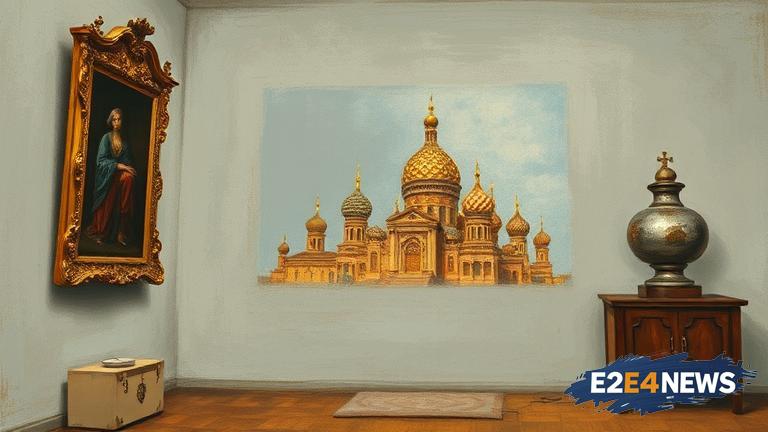The issue of looted art has been a contentious one for decades, with many countries and institutions seeking to reclaim their stolen cultural heritage. The problem began during World War II, when Nazi forces plundered countless artworks and artifacts from museums, galleries, and private collections across Europe. Many of these treasures were sold or traded on the black market, and some were even destroyed or lost forever. In recent years, there has been a growing effort to identify and recover these looted treasures, with many countries establishing specialized task forces and databases to track down the stolen artworks. The United States, in particular, has been at the forefront of this effort, with the Department of Justice and the FBI working together to recover and repatriate looted art. One notable example is the case of the Quedlinburg Treasures, a collection of medieval artifacts that were stolen from a German church during the war and later sold to a US collector. After a lengthy court battle, the treasures were finally returned to Germany in 1991. Similarly, the French government has been working to recover artworks looted from Jewish families during the war, including a number of paintings by famous artists such as Monet and Renoir. The restitution process can be complex and time-consuming, involving extensive research and negotiation with collectors, dealers, and institutions. Many museums and galleries have also been criticized for their handling of looted art, with some accused of turning a blind eye to the provenance of the artworks in their collections. In response, many institutions have begun to implement stricter policies and procedures for acquiring and exhibiting artworks, including thorough provenance research and transparency about the ownership history of the pieces. Despite these efforts, the battle for looted treasures is far from over, with many artworks still missing and countless families and communities waiting for justice. The issue is not only about recovering stolen property, but also about preserving cultural heritage and promoting historical accuracy. As the world becomes increasingly globalized, the need for international cooperation and coordination on this issue has become more pressing. The development of new technologies, such as artificial intelligence and digital databases, has also improved the ability to track and recover looted art. However, the process remains challenging, and it will likely take many years, if not decades, to resolve the issue. Ultimately, the restitution of looted art is a complex and ongoing process that requires the collaboration of governments, institutions, and individuals around the world. It is a reminder of the devastating consequences of war and the importance of protecting cultural heritage for future generations. The quest for restitution is not only about recovering stolen treasures, but also about promoting justice, accountability, and transparency in the art world. As the world continues to grapple with this issue, it is essential to remember the historical context and the human stories behind each looted artwork, and to work towards a future where cultural heritage is protected and preserved for all to enjoy.
